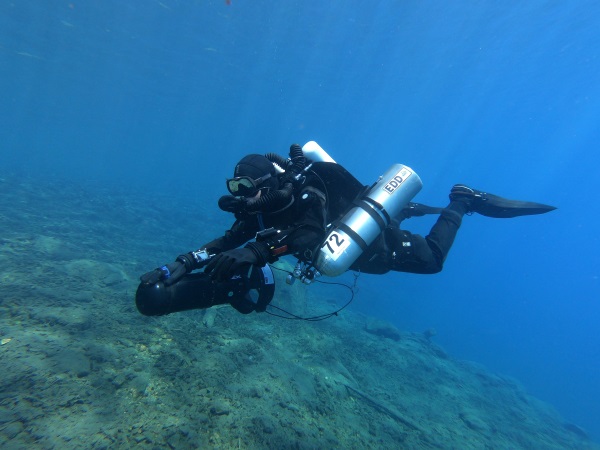Diver Propulsion Vehicle
Extend your exploration, reduce your workload and see more of a dive site. The use of a Diver Propulsion Vehicle (DPV) allow you to do all that and more.
While they offer great opportunity to expand your diving careful planning, task load management and specific skills are required to avoid serious potential issues, all of which are covered on the Swedtech Diving DPV program. Aimed to train the thinking diver to use a DPV correctly within their training level the DPV course is will allow any diver to expand their diving goals.
The course can be done using single cylinder, twinset or rebreather.
The student should have at least 5 hours of practical dive training in the water.
The student should have at least 5 hours of theory and briefings.
The course can be taught in ocean, sea or sea like environment.
After passing the course, the student is able to:
- Correctly setup a DPV
- Operate a DPV in the correct body position
- Use a DPV correctly for all components of the dive
- Use both DPV and fins to control the direction of the DPV fluidly
- Respond to DPV failures in a controlled and correct manner
- Respond to contingency situations in a controlled and correct manner
- Maintain a good team coordination and communication while using a DPV
Course outlines:
- Theory on Scooter use
- Land drills
- In water skill sessions and scenario application
Limits
- First two dives have a maximum depth of 30m
- Following dives to training depths of certification built up slowly by instructor (max 60m)
- Maximum PO2 is 1.4 bar
- Maximum END 30 meters
- No physical overhead diving
- Maximum three students per instructor during the practical training in the water
Prerequisites
- The student must be at least 18 years old
- The student must be certified as SwedTech Scuba Diver or equivalent
- The student must have proof of at least 50 dives
- The student must be in excellent health


 Svenska
Svenska